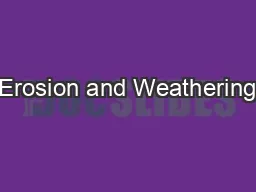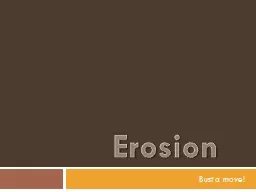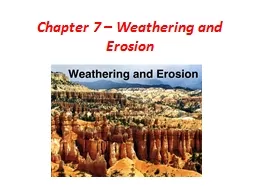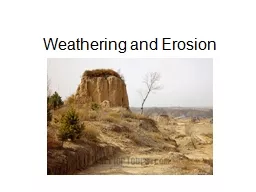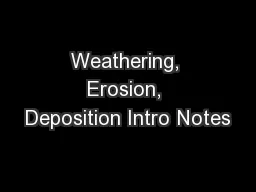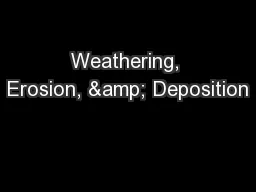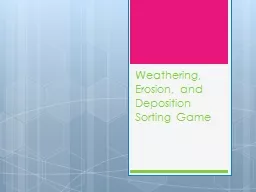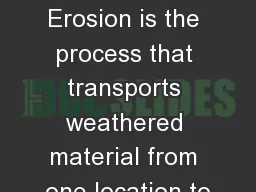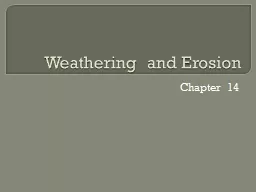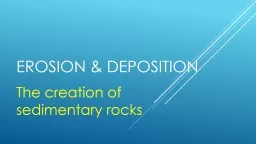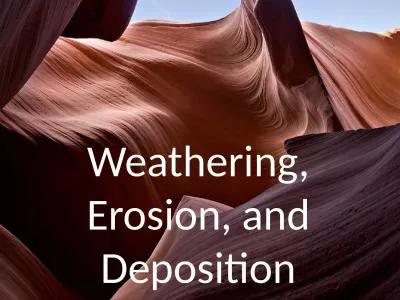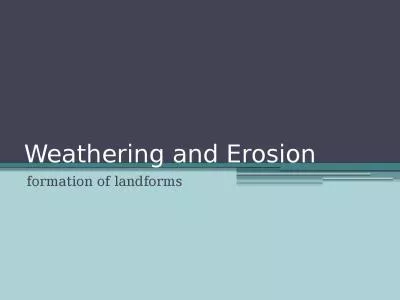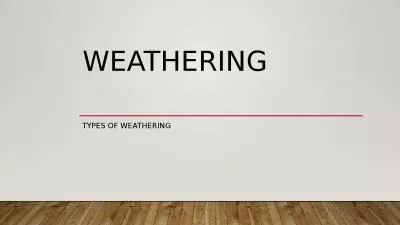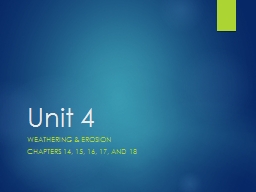PPT-Erosion and Weathering
Author : natalia-silvester | Published Date : 2017-04-22
104 Erosion Water in either gas liquid or solid form can change the surface of the earth it can even carve rock Erosion is the transportation of broken down rock
Presentation Embed Code
Download Presentation
Download Presentation The PPT/PDF document "Erosion and Weathering" is the property of its rightful owner. Permission is granted to download and print the materials on this website for personal, non-commercial use only, and to display it on your personal computer provided you do not modify the materials and that you retain all copyright notices contained in the materials. By downloading content from our website, you accept the terms of this agreement.
Erosion and Weathering: Transcript
Download Rules Of Document
"Erosion and Weathering"The content belongs to its owner. You may download and print it for personal use, without modification, and keep all copyright notices. By downloading, you agree to these terms.
Related Documents

